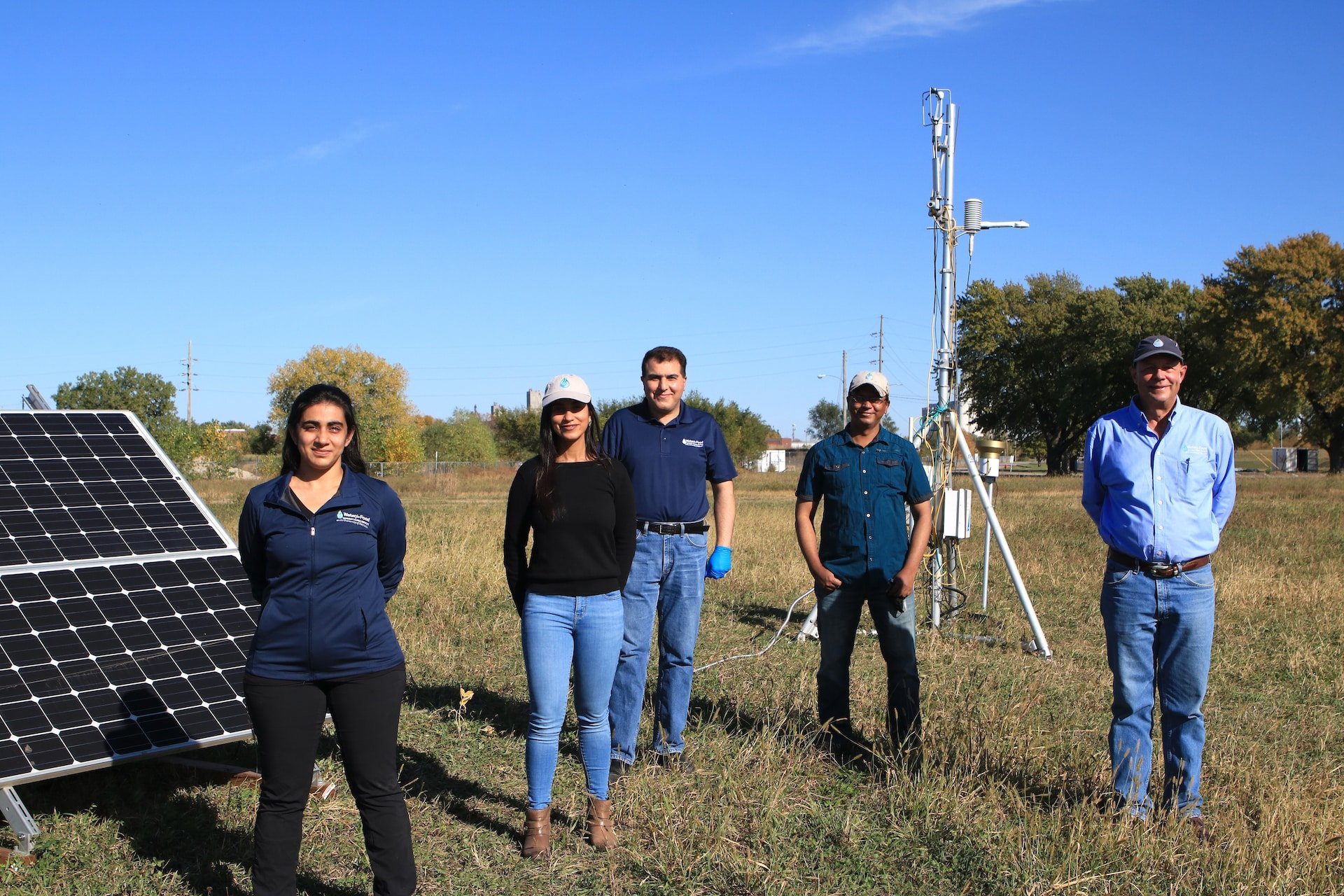Flux tower network provides farmers access to real-time ET info
10 Towers added to the Parallel 41 Flux Network
$450,839 in funding and in-kind matching support
Towers installed or upgraded in Colorado, Iowa, Kanasa, and Nebraska
This project, led by Christopher Neale at University of Nebraska-Lincoln and industry partner George Burba at LI-COR, has installed or upgraded 10 eddy covariance flux towers on or near the 41st Parallel North in Nebraska, Kansas, Colorado, and Iowa.
This tower network currently provides producers with directly measured evapotranspiration (ET) data useful for irrigation scheduling, variable rate irrigation prescriptions, and drought monitoring. Calibrating remote sensing also provides affordable and trustworthy data for irrigators.
This team is working to develop corrected evapotranspiration maps that combine Parallel 41 flux data with satellite data estimates.
“Our goal is to measure the crop water use so farmers can make better decisions.”
— Christopher Neale, Daugherty Water for Food Global Institute
Many tools exist to measure ET, but none are perfect. Eddy covariance flux towers provide the most accurate information but are too expensive for most farmers and landscape managers, and only provide data to farmers within range of the tower. Satellite data, which is a more affordable alternative and more accessible, need to be regularly calibrated for the data to be reliable.
The Parallel 41 Flux network’s “next generation” towers provide continuous measured ET, daily reference ET and other data points used to measure crop water use, schedule irrigation, assess plant stress, monitor drought, and calculate water balance and productivity.
For more information, visit https://parallel41.nebraska.edu/#/about

![env-EC-EddyFlux-7500DS-18[57021].jpg](https://images.squarespace-cdn.com/content/v1/633249132daf711663ddb8c2/1666910411744-7JOHJMQP669FJL0G8JPI/env-EC-EddyFlux-7500DS-18%5B57021%5D.jpg)

![env-EC-Full-7500DS-29[48].jpg](https://images.squarespace-cdn.com/content/v1/633249132daf711663ddb8c2/1666990270015-BQDUV3M26422LNTHZV1I/env-EC-Full-7500DS-29%5B48%5D.jpg)